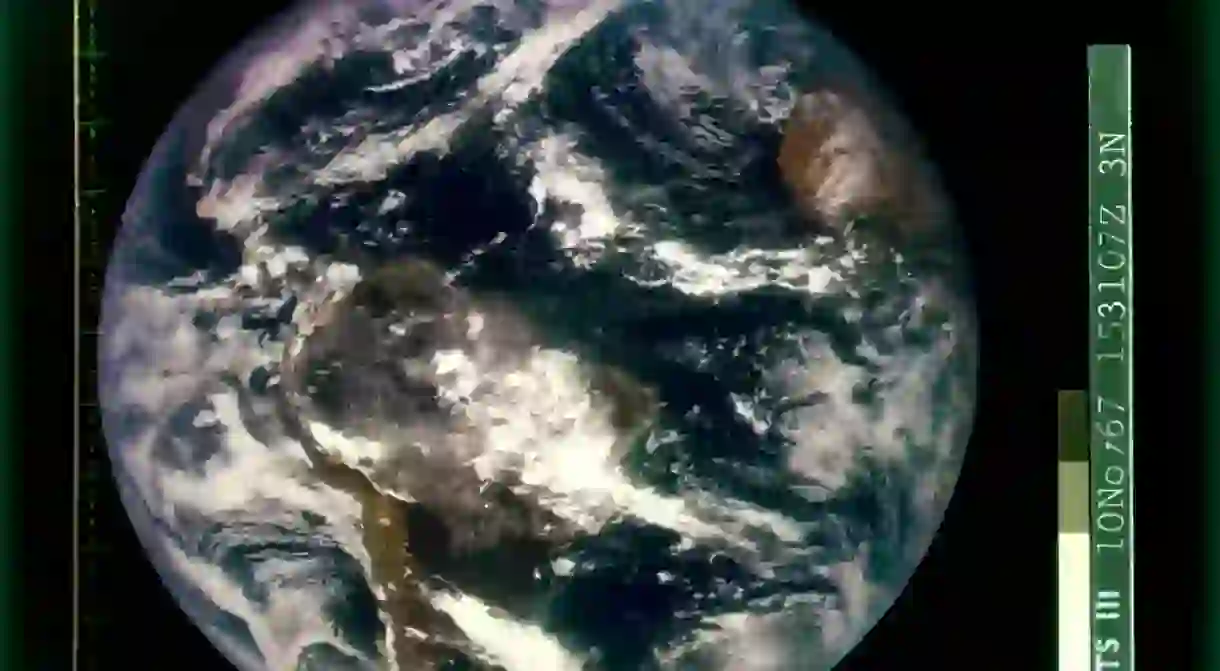The Counterculture Magazine of the ’60s Described as ‘Google in Paperback’

Back in the 1960s, before Google, Wikipedia, and the internet, a cobbled-together magazine called the Whole Earth Catalog changed the world with its ideas and inspired the technologies we rely on today.
In 1966, a biologist named Stewart Brand launched a public appeal asking NASA to release a photo rumored to have been taken of the Earth from space. Brand embarked on the mission after an LSD trip in which he thought he could see the curvature of the planet, and he believed this image of the “whole Earth” would inspire a shared sense of destiny in humanity. His ideas would go on to shape the thinking of some of technology’s most influential entrepreneurs.
According to Andrew Kirk’s 2007 book Counterculture Green: The Whole Earth Green and American Environmentalism, Brand believed there was a hunger among the hippie movement for renovating America’s industrial society during the ’60s and began projects attempting to address this desire.
Brand’s first move was to start the “Whole Earth Truck Store,” a 1963 Dodge truck which he toured around communes with his wife in 1968. The truck, which acted as a tool shop and a mobile education service, eventually became a store in Menlo Park, California, now the heart of Silicon Valley. From there, Brand decided to create a larger version of his tool catalog to bring his store and findings to the masses.
The first issue of the Whole Earth Catalog was published in 1968. The opening page of the 1969 Catalog laid out the purpose of the publication, which appeared in its initial iteration as part encyclopedia, part how-to instruction book, life guide, and collection of reviews and opinions about subjects ranging from physics to goat husbandry.
“We are as gods and might as well get good at it,” the magazine read. “So far, remotely done power and glory—as via government, big business, formal education, church—has succeeded to the point where gross defects obscure actual gains. In response to this dilemma and to these gains a realm of intimate, personal power is developing—power of the individual to conduct his own education, find his own inspiration, shape his own environment, and share his adventure with whoever is interested. Tools that aid this process are sought and promoted by the Whole Earth Catalog.”
Just prior to starting the Catalog, Brand had attended what was described as “the mother of all demos,” when the world was shown the potential power of computers. Douglas Engelbart, an American engineer and early computer and internet pioneer, wowed an audience of computer scientists with the first computer mouse, teleconferencing, word processing, and interactive computing.
Brand, who had a habit of being in the right place at the right time, was operating the camera and consulting on the presentation. He was subsequently the first person to use the phrase “personal computer” and was an early advocate for the role of computers in the new world. This link with computing would create possibly the most lasting legacy of the publication.

The Catalog has been credited with bringing ideas such as recycling, electronic synthesizers, solar power, and organic farming to a mainstream audience, and attracted many influential followers along the way, mostly in computing.
Among them was Steve Jobs, the founder of Apple. In his 2005 commencement speech at Stanford University, Jobs paid tribute to Brand and the Whole Earth Catalog. He described the publication as “one of the bibles of my generation” and praised the “poetic touch” of Brand.
“This was in the late 1960s, before personal computers and desktop publishing, so it was all made with typewriters, scissors, and Polaroid cameras. It was sort of like Google in paperback form, 35 years before Google came along: it was idealistic, and overflowing with neat tools and great notions,” Jobs told the crowd of graduating students.
The final issue of the Catalog was released in 1971 and won a U.S. National Book Award. Brand moved on to other things, including co-founding the first open online community, a series of TED talks, and an ambitious biotech project to bring back extinct animals. His beliefs had shifted away from the power of drugs towards the power of computing as he got older, and he was among the first to endorse the potential and freedom of cyberspace, inspiring the personal computing revolution and many of the technologies we take for granted today.
On the back of that last issue was a photograph of a country road, and beneath it were the words: “Stay Hungry. Stay Foolish.” Perhaps now more than ever, as the internet is rapidly stripped of its freedoms and technology companies become the leading corporations in the world, we need entrepreneurs heeding those words and embracing the lessons of a decades-old catalog.













